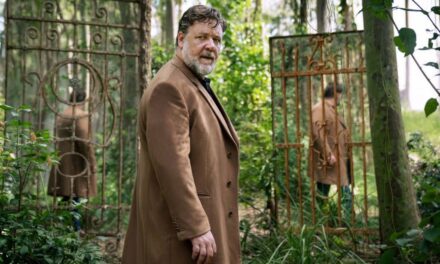The establishment of the principality - 1570
The decree of Rákos in 1505, the loss of the Battle of Mohács in 1526, the double election of a king, the division of the country into three parts in 1541, as well as the peace of Drinapoly in 1568 and the Treaty of Speyer in 1570 led to the formation of Eastern Hungary.
Miksa Habsburg and II. They made an alliance with Sultan Selim, but II was not invited to do so. King John of Hungary. In Speyer, Miksa had already reached an agreement with the Hungarian king. (It should be noted that the agreement did not enter into force due to the death of Zsigmond János shortly thereafter.) However, the Habsburgs tried to observe and enforce its consequences. Accordingly, II. János renounced his royal title and did so on behalf of his successors. The son of János Szapolyai (King János I), named János Zsigmond, became the first prince in Transylvania and Parthia. the relatively small area of the region , it was not one of the major states, but in terms of its geographical location, Transylvania, which was among the great powers, played a key role. Historians who are superficial and deheroize the role of the principality still consider this wonderful country a "vassal state". However, Transylvania played a much more important role in Hungarian history than this summary judgment. After all, the princes, nobles and people of Transylvania saved the Hungarian language, Hungarian culture, the continuity of our independent history, and the development of Protestant churches for the future. In the history of Europe, for example, the free practice of religion was first formulated in the territory of the Principality of Transylvania in 1568, in Torda.
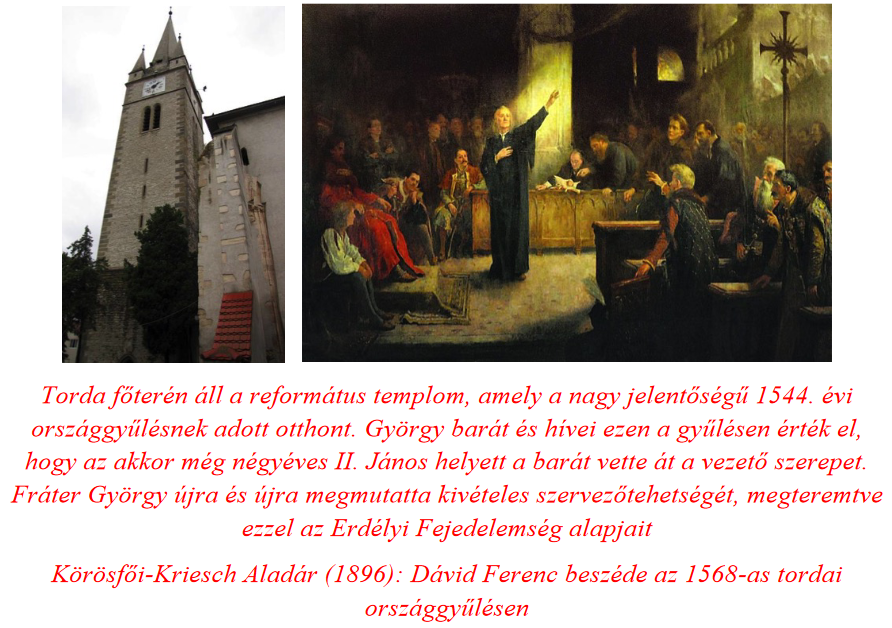
In the Transylvanian Parliament of 1568, the Roman Catholic, Reformed, Lutheran and Unitarian religions became equal, and the persecution of people of other religions was forbidden. Regardless of this, and in addition to the four "recognized" religions, Greek Catholics, Pravoslavs and followers of Judaism could also practice their faith in the land of Transylvania.
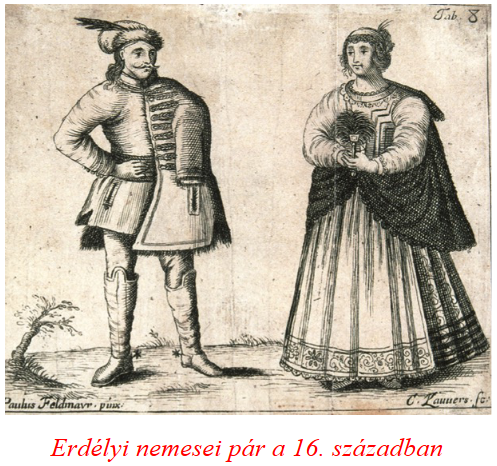

The image of the coat of arms known today was created around 1590. After that, the three defining emblems constantly changed their place within the shield, depending on who the prince was. The symbol of the three privileged nations – the Hungarian, the Székely and the Saxon – was always on the shield. The eagle was the symbol of the Hungarian, the sun and the moon of the Székely, and the seven bastions of the seven Saxon seats. The crown was placed on top of the coat of arms in 1765, when Mária Theresia elevated Transylvania to the rank of Grand Duchy. However, this already happened under Habsburg rule, when the principality of the Hungarians truly lost its independent Hungarian character. (It should be noted that Habsburg-era Transylvania played a significantly smaller role in shaping our history than Transylvania during the Turkish era.)
The seat of the principality was Gyulafehérvár between 1570-1692, and after the expulsion of the Turks, between 1692 and 1711, the capital of the Habsburg Saxons, Nagyszebi, became the center. However, Transylvania officially became part of the Habsburg Empire only in 1711, after the Rákóczi War of Independence, which led to the legal end of the principality.
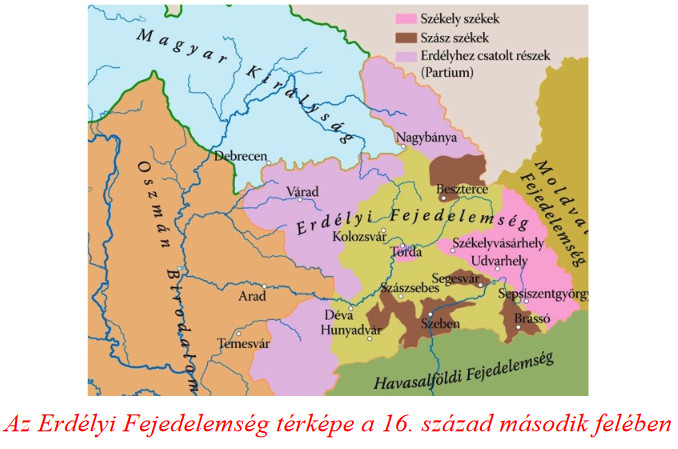
Princes following Zsigmond János
Rising from the grace of King Matthias, János Szapolyai was at the head of the movement of the common nobility. His undisclosed goal was to become one of the country's leading nobles, or even their leader. His plan was successful, as he became king of Hungary in 1526. A similar career was followed by the Báthory (Báthori) family, who then played a decisive role in the life of Transylvania. (The three branches of the family and their historical role were discussed earlier.) Among the great figures of Hungarian history, we include István Bocskai, Gábor Bethlen and the Rákóczias, who also played a significant role in the life of Transylvania.

Principality of István Báthory
István Báthory's historical role in Transylvania is unusual in two respects. On the one hand, he was the only one among the princes who kept his Roman Catholic faith. On the other hand, he exercised his princely title only between 1571-1575, because he was the king of Poland from 1575 until his death in 1586. (It should be noted that according to the Treaty of Speyer, János Zsigmond could only exercise the title of voivode after his death.)
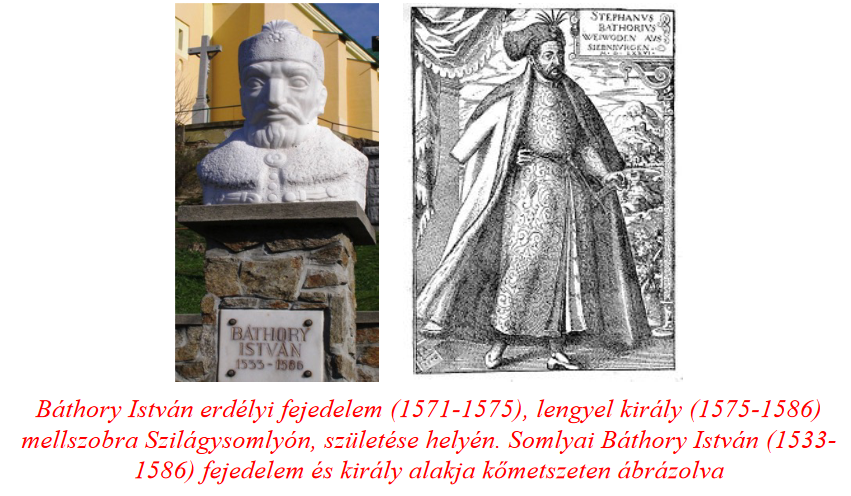
István Báthory fought a power struggle with Gáspar Bekes, who was supported by the Habsburgs, already during the life of Zsigmond János and even after his death. However, at the 1571 Gyulafehérvár parliament, the Transylvanian orders elected Báthory as their prince, officially Voivode of Transylvania. It should be known that the Turks were behind István Báthory, whose interest was to prevent Transylvania and Royal Hungary from falling under the power of the Habsburgs. This coincided with the interests of Transylvanian Hungarians. (It should be noted that Báthory also secretly made an agreement with Emperor Miksa, who was forced to accept the Catholic Báthory against his interests, thus legalizing the hereditary power of the family.) Miksa, however, in typical Habsburg fashion, continued to support Gáspár Bekes against the elected prince. In the Battle of Kerelőszentpál, which took place on July 9, 1575, István Báthory defeated his opponent for good, banishing Bekes and his followers from Transylvania. Bekes left Fogaras castle and his estates, and the nobles and lords loyal to him were also forced to do so, many of whom Báthory executed. At that time Báthory also captured the poet Bálint Balassi, whom he took with him to Poland.

István Báthory strengthened the princely power, which was continued by his brother Kristóf Báthory as governor after his election as Polish king. Báthory considered the consolidation of economic life to be his first important task. He developed mining, trade, and industry, and revised property grants. He did not disturb the Torda decision of religious tolerance, since the majority of the population of Transylvania practiced the Protestant faith. But his undisclosed goal was to strengthen the Catholic faith. To this end, he installed the Jesuit order in Cluj in 1579. On the other hand, the reformer Ferenc Dávid, the Unitarian bishop, was locked up in Déva's castle. István Báthory himself was an excellent writer with a good pen, which is evident from his letters, among other things. He loved music, and he invited intellectuals who had graduated from Italian universities, primarily in Bologna, to Transylvania. In summary! The rule of István Báthory created the first heyday of the Principality of Transylvania.
After the death of the Polish king (prince of Transylvania), two Báthories played a role in the political management of Transylvania: Zsigmond Báthory and András Báthory. Zsigmond held the title of Voivode of Transylvania from his childhood (1581), and after the death of his uncle - István Báthory - he took over the management of the principality in 1586. After a short time, he made a series of political mistakes. Under the pressure of the Protestant Transylvanian Parliament, he expelled the Jesuits from Transylvania, for which the Pope cursed him. Zsigmond joined the Holy League, but this turned him against the Transylvanian lords and the Turks. In his helplessness, he resigned and handed over power to his nephew, Báthory Boldizsár. However, with the support of István Bocskai, Zsigmond soon returned and executed Boldizsár and some of his followers. He continued his policy of leading nowhere, so he resigned again in 1598 and fled to Poland. From there he returned to Transylvania at the head of a Polish army, where he occupied the throne for the third time. However, he was not able to demonstrate success this time either, so in 1602 he renounced his princely title and settled in Bohemia, where he was even imprisoned and died in 1613.

András Báthory was already a cardinal when he ascended the princely throne. Like Zsigmond, he was the nephew of the great István Báthory, and like his predecessor, he was unable to cope with the complicated situation in Transylvania, full of constant intrigues. He tried to make peace with the Turks and maintain good relations with the Habsburgs, but this did not lead to results. Emperor Rudolf sent Mihály Vitéz, the ruler of Havasalföld and Moldavia, to Transylvania, who attacked the unprepared András Báthory. The prince was defeated in the Battle of Sellenberg. He tried to escape, but he was murdered by Székely's opponents at the end of October 1599, alongside Csíkszentdomokos.
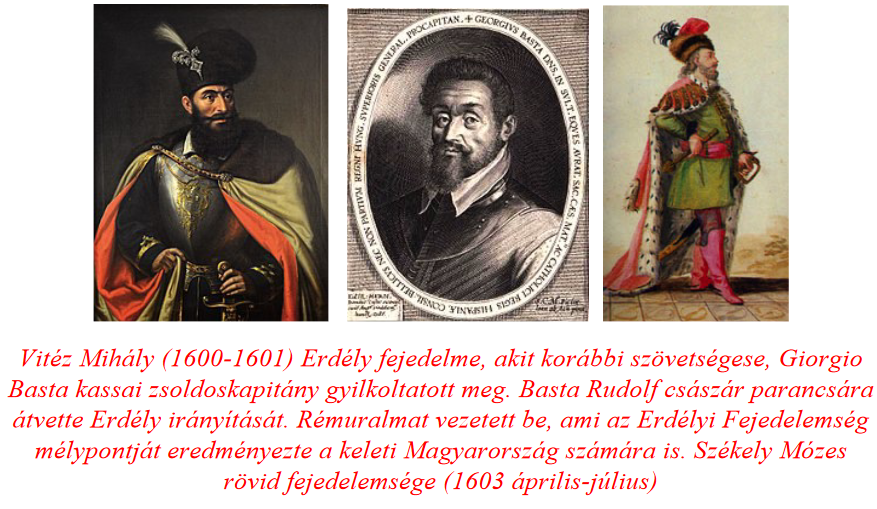
In 1603, the Unitarian Mózes Székely, a native of Udvarhelyszék, organized the first uprising against the reign of terror. After the victories, he was elected prince on April 15, 1603. After three months, however, IX, who attacked Transylvania with Habsburg support. Prince Radu of Havasalföldi defeated him, and Mózes Székely's severed head was displayed in the main square of Brasó as a deterrent.
The uprising of István Bocskai
István Bocskai was born in Cluj - in the neighborhood of Mátyás's birthplace. At the beginning of the 17th century, he was already the chief lord of Bihar county, when Vienna launched another attack on the lands of Eastern Hungary and Transylvania. The Bocskai family was a supporter of the Habsburgs, as the child István Bocskai grew up in Vienna and Prague. He spent his young years as a boy and later as a court bodyguard, getting to know Vienna's military and state administration machinery. Bocskai returned home to Transylvania when he was twenty, and despite his plans and the expectations of court circles, he never returned to the court of the Habsburgs. Stormy years followed. Among other things, in 1595 he was the commander-in-chief of the Transylvanian army which won a great victory over the Turkish army at Gyurgyevo with the support of the Szeklers. In the following months, Bocskai and Prince Zsigmond Báthory, contrary to their promise, turned against the Szeklers - this was the bloody carnival - and executed their leaders. The trouble was compounded by the fact that in 1602 Bocskai also took action against the reign of terror of General Basta, for which he was sued by the court and detained in Prague for two years. Returning to his estates in Bihar in 1604, Bocskai decided to lead an anti-Habsburg uprising. He was supported in this plan by Gábor Bethlen, who was then hiding in Turkish territory. On October 15, 1604, Bocskai won a victory over the imperial army marching against him near Álmosd, and after a month he entered Kassa.

It was not only Bocskai's excellent military ability and political success that called for unity among the peoples of Eastern Hungary. Against the murdering and looting Basta mercenaries, the oppressed serfs, the wandering hajduks, the citizens of the city due to the Viennese policy of persecuting the Protestants, but also the commoners and some of the nobles, who had their rights and property taken away, stood behind Bocskai. This is how it happened that in the spring of 1605 Nyárádszereda, then Szerencsen, was elected prince of Hungary and Transylvania.

Bocskai was actually crowned with the crown sent by the Turks, which he later tried to make formal. He rightly feared that if he recognized the authority of the Porte, he would not have been able to reach a successful agreement with Emperor Rudolf. The Peace of Vienna, concluded on June 23, 1606, was one of the successful events of the struggle for independence against the Habsburgs. He secured religious freedom, Hungarian orderly rights, and the counties of Szatmár, Bereg and Ugocsa were annexed to Transylvania. Bocskai's political successes were signaled by the peace of Zsitvatorok concluded on November 11, 1606 at the mouth of the Zsitva river, which ended the fifteen-year war that caused much destruction. The resettlement of the Hajduk can be counted among the results of the peace agreements that have been effective to this day. About ten thousand Hajdús received not only nobility, but also land and houses, which the residents of the Hajdú towns still remember with pride. However, Bocskai did not only ensure the privileges of the Hajduks, but also the Székelys.

The prince's death - like that of many other leading Hungarian politicians throughout history - occurred at a time when it was good for Vienna, but had a destructive effect on Hungarian national interests. To this day, the view that Bocskai was poisoned by his confidant, Mihály Káthay, persists. (Káthay was exterminated by the hajduks after the death of the prince.) According to other researchers, Bocskai's death was caused by water sickness. The reminiscences of contemporaries say that the God-fearing, pious, who wanted peace with all his might, Bocskai was the two emperors - II. He also wanted to create an agreement between Rudolf and I. Ahmed. Because he knew very well that if there is no peace, it will only harm the Hungarians. Unfortunately, he had little time to achieve his goals when he was suddenly taken by death.
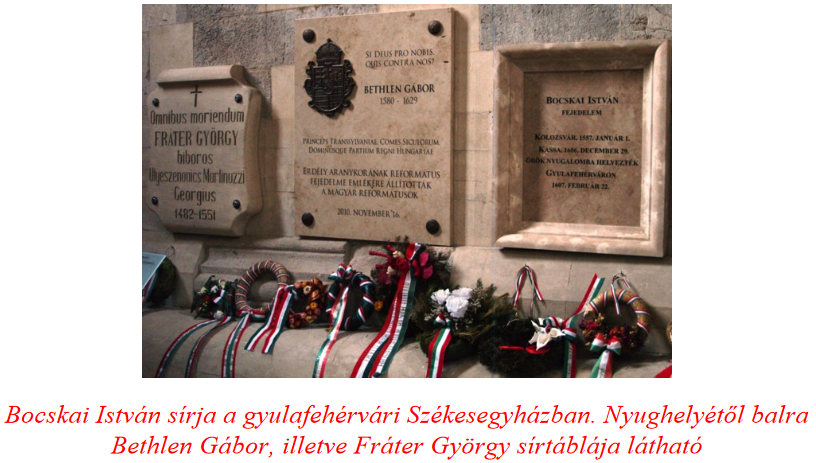
Gábor Bethlen (1613-1629) is the great prince
After the unexpected death of Bocskai, Zsigmond Rákóczi (1607-1608), one of the richest lords of the country, came to the princely seat.
The captain of the castle of Eger gained fame and fortune with a brilliant victory over the Turks at Szikszó in 1588. Zsigmond Felsővadász Rákóczi, who also attained the rank of baron - which his ancestors had acquired - was the founder of the family's wealth. Zsigmond Rákóczi sided with Bocskai in 1604, who was elected governor of Transylvania in 1605 for his services. After Bocskai's death, the thoughtful, elderly, excellent general could sit in the princely chair. However, Gábor Báthory also applied for the throne of Gyulafehérvár, who sided with the Hajdús. With their support, he seized the throne from Zsigmond Rákóczi, who died that same year, in 1608. The immoral life and violent politics of Gábor Báthory (1608-1613) provoked the resentment of both the Transylvanian orders and the Saxon sees. The squandering of the princely wealth, his irresponsible promises, and the execution of innocent people led to the fact that in the autumn of 1613 he was murdered by his own hajdus in Várad. The anger of his followers was provoked by the fact that he would have been ready to hand over Várad to the Turks in order to save the prince's throne. (The body of Gábor Báthory was not buried in Nyírbátor until 1628.)

Gábor Bethlen was born in the castle of Marosilly in 1580 - after the castle was taken from the family - and spent his childhood years on the family estate of his mother, Druzsina Lázár, on Gyergyószárhegy. In 1613, the young man with excellent political and military talent, who visited many places in Eastern Europe, took the place of the spendthrift prince Gábor Báthory.


The talented young prince immediately set about restoring the economic, cultural, political, and military life of Transylvania.
He invited excellent specialists from abroad and sent young Hungarians to study at renowned European universities. He paid particular attention to precious metal mining. As a result, he made good money, which boosted trade. He regulated the circulation of sought-after goods, setting a good example by purchasing them. He is fondly remembered for the many foundations he initiated in the fields of science and art, and for his faith in educated people.
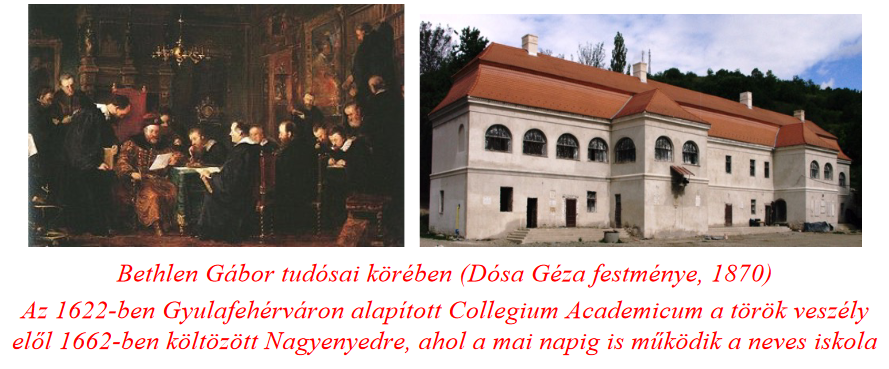
Bethlen gained European fame in 1619, when he allied with the Czech Protestants against Vienna, because of the imperial excesses.
With this, the prince intervened in the Thirty Years' War (1618-1648). Bethlen had already organized the siege of Vienna when the troops allied with the Habsburgs attacked him from the rear. Thanks to his ambitious policy, in 1620 he was elected king of Hungary at the parliament in Béztercebány, but he had to resign at the end of 1621 due to the defeat of the Czechs. (In 1620, the Czechs were defeated in the Battle of White Hill, which caused a significant break in the history of the Czech Republic.) He was forced to negotiate with II. with Emperor Ferdinand. However, peace only lasted until 1624, when Gábor Bethlen launched another campaign against Vienna. For the sake of anti-Habsburg aspirations, in 1626 he married the sister of the Protestant Elector of Brandenburg, Katalin.
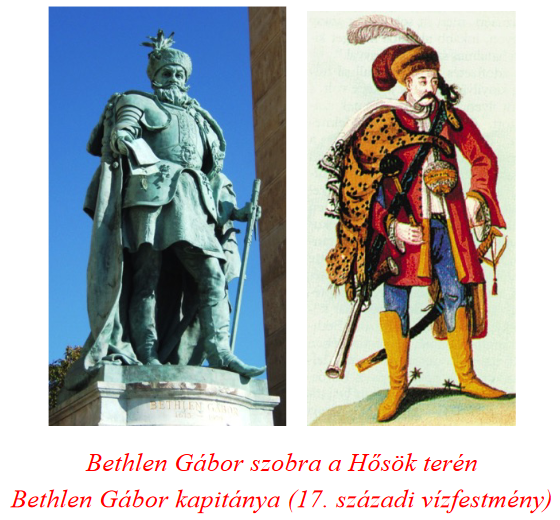
The Hungarian prince entered into an alliance with several German principalities, including Denmark, the Netherlands, and Sweden.
"King Gabriel", as he was called by his contemporaries, also flirted with acquiring the Polish throne. The latter had no real basis due to the reformed religion of the prince and the resistance of the Transylvanian orders. Gábor Bethlen was a full-blooded politician and military leader. In addition to the Hungarian and Székely orders, he was able to get the Saxons behind him, thus preventing Vienna from driving a wedge between the peoples of Transylvania. He achieved this by giving the city of Sibiu to the Saxons. He was also able to get the Porta on his side, which cost him the handover of Lippa to the Turks. (Bécs Lippa called Bethlen a traitor to Christianity because of his surrender .) Ultimately, however, this policy created the golden age of Transylvania (1619-1626), which was the culmination of the nearly one and a half century period of the Principality of Transylvania (1571-1711). Bethlen's greatness was also announced by the fact that in 1622 he was able to annex the counties of Abaúj, Bereg, Borsod, Szabolcs, Szatmár, Ugocsa and Zemplén to the principality.
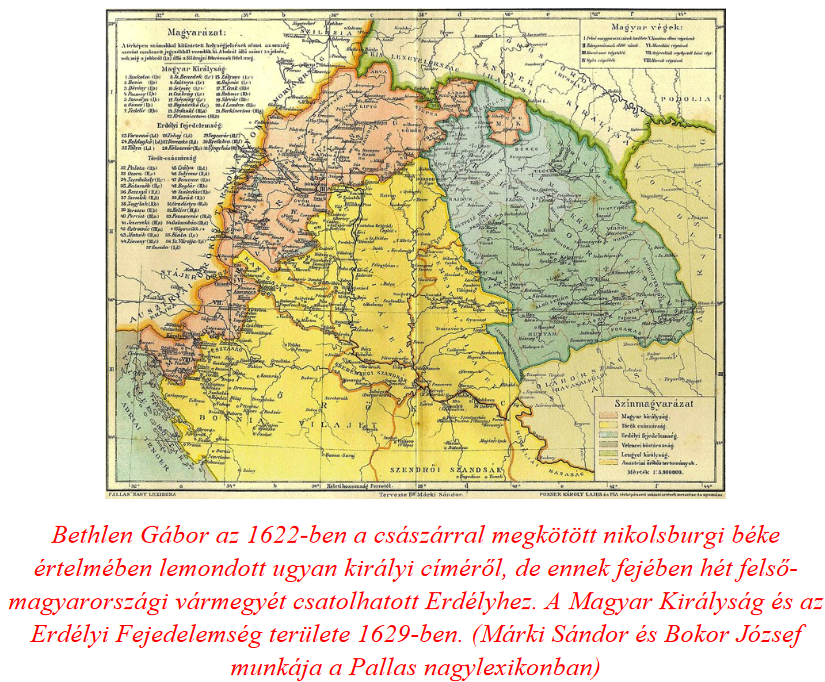
Gábor Bethlen passed away in 1629. The throne was inherited by his wife, Katalin of Brandenburg (1629-1630), who, however, was not accepted by the Transylvanian lords. They did so rightly, since the first decree of the princess was to return the seven counties to Ferdinand, and she had no concept of managing the principality. After a few months, the widow moved to Fogaras castle, then to Tokaj, and later to Hainburg. She married again and moved back to Pomerania, her homeland, with her husband.
The Rákócs on the princely throne
The Habsburgs did everything they could to bring Eastern Hungary and Transylvania under their control. However, György I. Rákóczi (1630-1648), who came to the throne in 1630, overruled Vienna's calculations. György is the son of Zsigmond Rákóczi, who founded the rise of the family, and was born in Szerencs in 1593. The twelve-year-old young man Bocskai had a courthouse in Kassa, where he met Gábor Bethlen, who was already twenty-six years old at the time. István Bocskai, Gábor Bethlen, and (Old) György Rákóczi's common national and Transylvanian consciousness, religion, world view, and anti-Habsburg were already established in these years.

György Rákóczi controlled the life of the principality with a strong hand. Gábor Bethlen continued his economic, political, military and religious work there, where it was interrupted by the death of the great prince. Thanks to this, the treasury grew, and the Principality of Transylvania could live its life in safety and stable conditions. György Rákóczi became the chief lord of Borsod County in 1615 during the reign of Gábor Bethlen, then the castle captain of Ónód. In 1616, he married Zsuzsanna Lorántffy, born in Királyhelmec, whose dowry, Sárospatak and the manor belonging to it later played a major role in the life of the Rákóczi family.
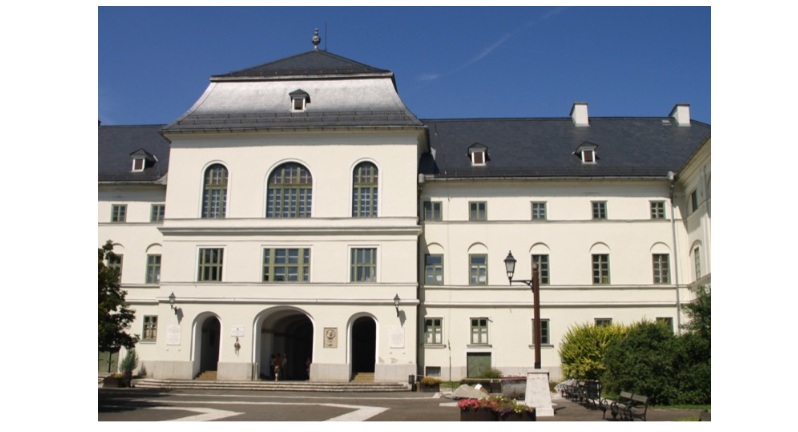

Under the rule of György Rákóczi, Transylvania developed in peace.
Despite the fact that during these years Transylvania was constantly attacked by two great powers. One enemy was the Turks, the other the Habsburg power. The princes of Transylvania, who could politicize on a European scale, were forced to feign friendship with the Turks, despite their Protestant faith. After all, the other enemy, the Christian Vienna, did not mean more security for Transylvania either, given that the Habsburgs wanted to bring the Principality of Transylvania under their power. György I. Rákóczi made wise decisions when he served the interests of his country with his Hungarian faith, language and religion. He himself lived a frugal and simple life, according to the records, he always had his guiding principle, the Bible, in his hand. He was rightfully given the title "biblical prince", which indicates that György I. Rákóczi's puritan life, his spirit of giving, and the expenses related to the principality - such as the costs of campaigns - were covered with his own money. According to contemporaries, the prince read the New Testament part of the Bible 32 times. He continued the politics of István Bocskai and Gábor Bethlen when he led a campaign against Vienna in 1644-1645. The Peace of Linz ensured the free practice of the Protestant religion in Transylvania as well. The European allies of György Rákóczi and the approval of the Porte confirmed Transylvania's independence, economic and cultural development.
After the prince's death in 1648, his son II. Under the name György Rákóczi (1648-1657). Following István Báthory's example, the 27-year-old prince's desire was to acquire the Polish throne. However, the Poles put János Kázmér on the throne in 1648, which the Transylvanian prince experienced as an insult. The following year, he entered into an alliance with Bogdán Chmielnicki, the Cossack hetman. In 1653, György Rákóczi extended his power to the Havasalföld and Moldavia beyond the Carpathians, indicating his political and military ideas.
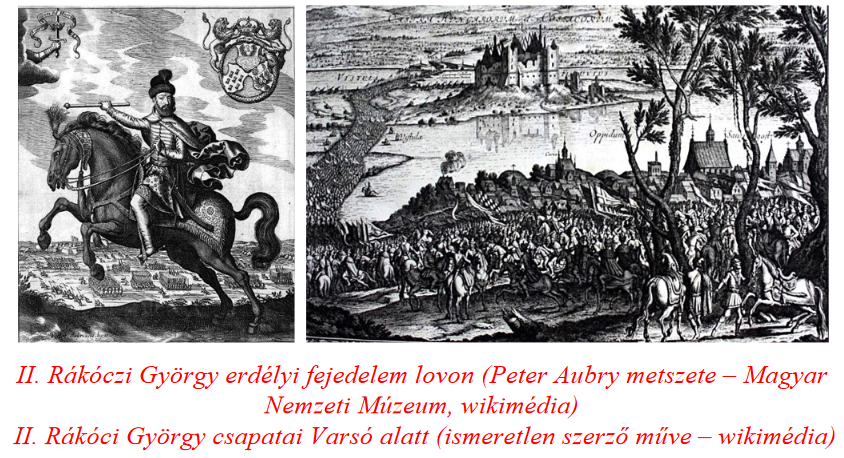
Among other things, this contributed to the fact that he overestimated his power and his political role in Eastern Europe. This led to the great defeat, which put Transylvania in danger, and he himself paid with his life, which led to the war that broke out between the Polish-Lithuanian Union and Sweden in 1655. The fact that both the Poles and the Swedes offered György Rákóczi the Polish crown in return for the alliance made him confident. The Protestant prince finally attacked Poland in alliance with the Swedes. In 1657, he occupied Kraków and even Warsaw, when the Swedish king Károly Gusztáv - due to the attack of the Danes - left the Hungarian ruler alone. He also made a big mistake by not asking for the support of the Porte before the campaign, thereby angering the Sultan himself. In the meantime, the Poles ravaged Northern Transylvania, and after the Swedes, the Cossacks and the Moldavian-Havasalföld troops also left Rákóczi alone. After a humiliating peace, the prince hastened home to Transylvania, leaving his army alone, which was then destroyed by the Tatars.
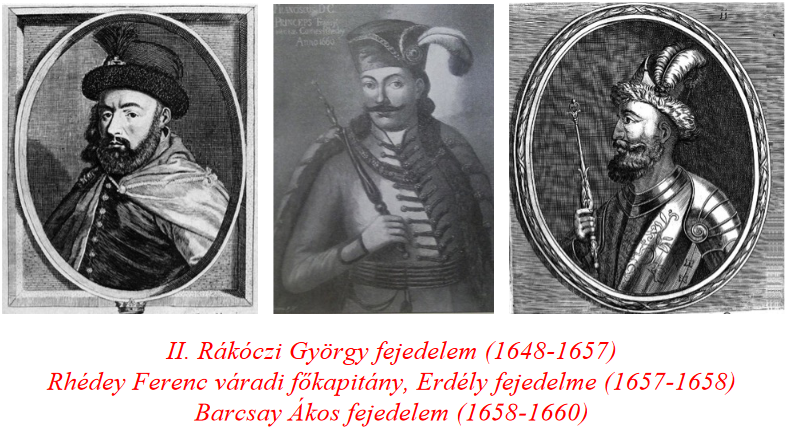
Due to the pressure of the Turks, in November 1657, the orders of Transylvania elected Ferenc Rhédey, captain-in-chief of Varad, as the prince of Transylvania instead of Rákóczi.
Rákóczi, whose throne was in imminent danger, could not accept defeat, so in January 1658 he took back the princely title with the help of the Hajduk and Szeklers. However, the Turks did not accept this. This is how it happened that in October 1658 Ákos Barcsay, scion of a Calvinist noble family, sat on the princely throne. He was able to rule for a short time, but he had the strength and talent to save Transylvania from final destruction, albeit in return for paying a considerable amount of money (five hundred thousand ducats). However, Rákóczi could not settle for this change of power either , and tried to regain his power with another campaign. In May 1660, Rákóczi was defeated by the Turks in the Battle of Szaszfenes. He fought bravely, but died of a head injury on June 7, 1660. (The son of György II Rákóczi and his wife, the strict Catholic Zsófia Báthory, Ferenc Rákóczi was elected prince as early as 1652. However, in 1660 Zsófia Báthory was forced to leave Transylvania together with his son, and Ferenc I. Rákóczi could no longer officially exercise the princely title. dignity.)
Ákos Barcsay was succeeded in the princely seat by János Kemény (1661-1662), who had already learned the craft of politics and military leadership at the court of Gábor Bethlen. During the reign of György I. Rákóczi, he was treasurer, commander of the Transylvanian armies, and one of the drafters of the Peace of Linz. II. During the reign of György Rákóczi, he was the head of the chancellery, a court adviser, and also one of the generals of the Polish campaign that ended tragically. During his reign, he became close to Emperor Lipót, and thanks to this he fled from the Turkish attack to the Kingdom of Hungary.
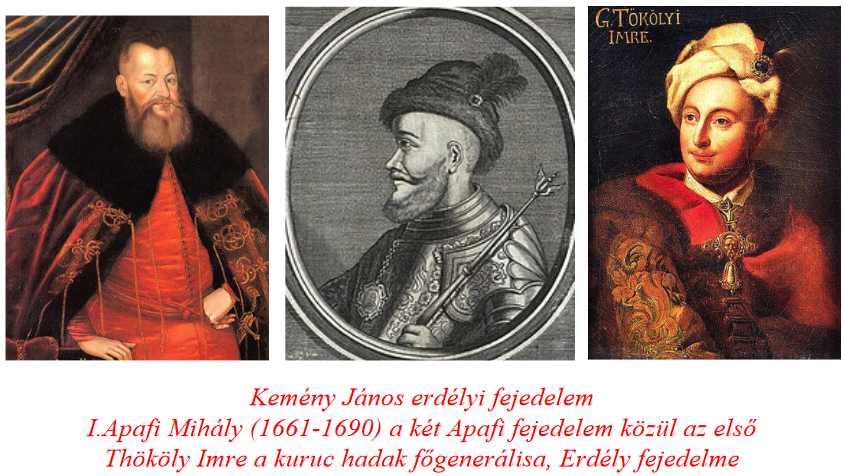
Mihály Apafi also participated in the Polish campaign, where, like János Kemény, he was captured by the Crimean Tatars. He was released only with difficulty, after three years, when the family was able to collect the ransom. He ruled for nearly thirty years, preserving the independence of Transylvania. However, after his death, the era of the Principality's statehood ended.
Imre Thököly, lord of Késmárk, the first major general of the Kuruc armies. Stepfather of little Ferenc Rákóczi when he married Ilona Zrínyi. He fought a war of independence against the Habsburgs, and when he became the prince of Upper Hungary between 1682-1685, Hungary, which was divided into three parts, was divided into four parts. In September 1690, he was also elected prince of Transylvania, although he only exercised his power in Transylvania for a short month.

The last Transylvanian prince II. Ferenc Rákóczi, the leading prince of the Kuruc freedom struggle, son of Ferenc I. Rákóczi and Ilona Zrínyi. Little Rákóczi got to know camp life at the age of seven, when his stepfather, Imre Thököly, took him with him to the campaigns against the Habsburgs. At the beginning of the War of Independence, before 1703, the Christian armies had already expelled the Turks from the country. Hungary, including Transylvania, came under the control of the Habsburg Empire. Rákóczi tried to prevent this aspiration of Vienna.
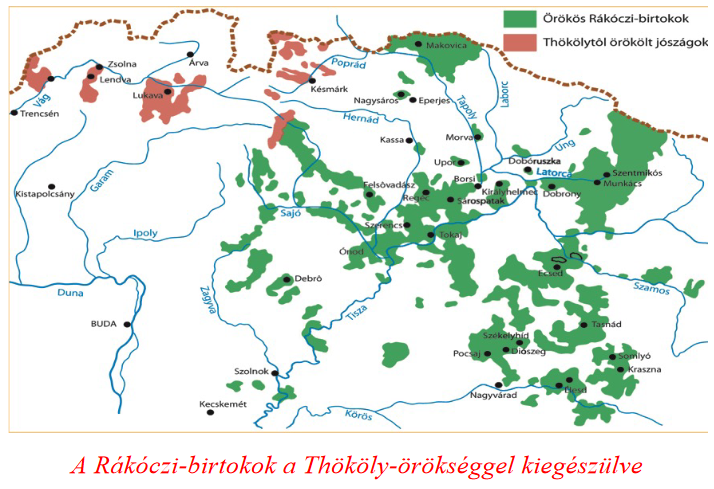
During the Kuruc War of Independence, on July 8, 1704, the great-grandson of the biblical prince was elected the prince of Transylvania, who was the last prince in the history of Transylvania.
It should be known that the Protestant I. and II. György Rákóczi's successor was deeply religious, but a devoted follower of the Roman Catholic Church. The conversion was managed by the Catholic grandmother, Zsófia Báthory. The successor of the Polish king, Zsófia Báthory, converted her son, Ferenc I. Rákóczi, from execution for his participation in the Wesselényi conspiracy, in exchange for a huge ransom, to the Catholic faith. Little Rákóczi was born to a Catholic father and Ilona Zrínyi, also a Catholic. The principality ended with the fall of the war of independence in 1711, when Vienna also took control of Transylvania.


The beneficiaries of the end of the Principality of Transylvania were the Habsburgs. After all, the treasures of the fertile land, the rich salt and metal mines, and the taxes already flowed to Vienna. Transylvania legally became a part of the Kingdom of Hungary and the empire, but as in every age since the Árpáds, it has preserved a number of individualities that can be discovered even today, when Transylvania belongs to Romania.
Author: Ferenc Bánhegyi
(Header image: Wikipedia)
The parts of the series published so far can be read here: 1., 2., 3., 4., 5., 6., 7., 8., 9., 10., 11., 12., 13., 14., 15., 16., 17., 18., 19., 20., 21., 22., 23., 24,, 25., 26., 27., 28., 29/1., 29/2., 30., 31., 32., 33., 34., 35., 36., 37., 38., 39.


